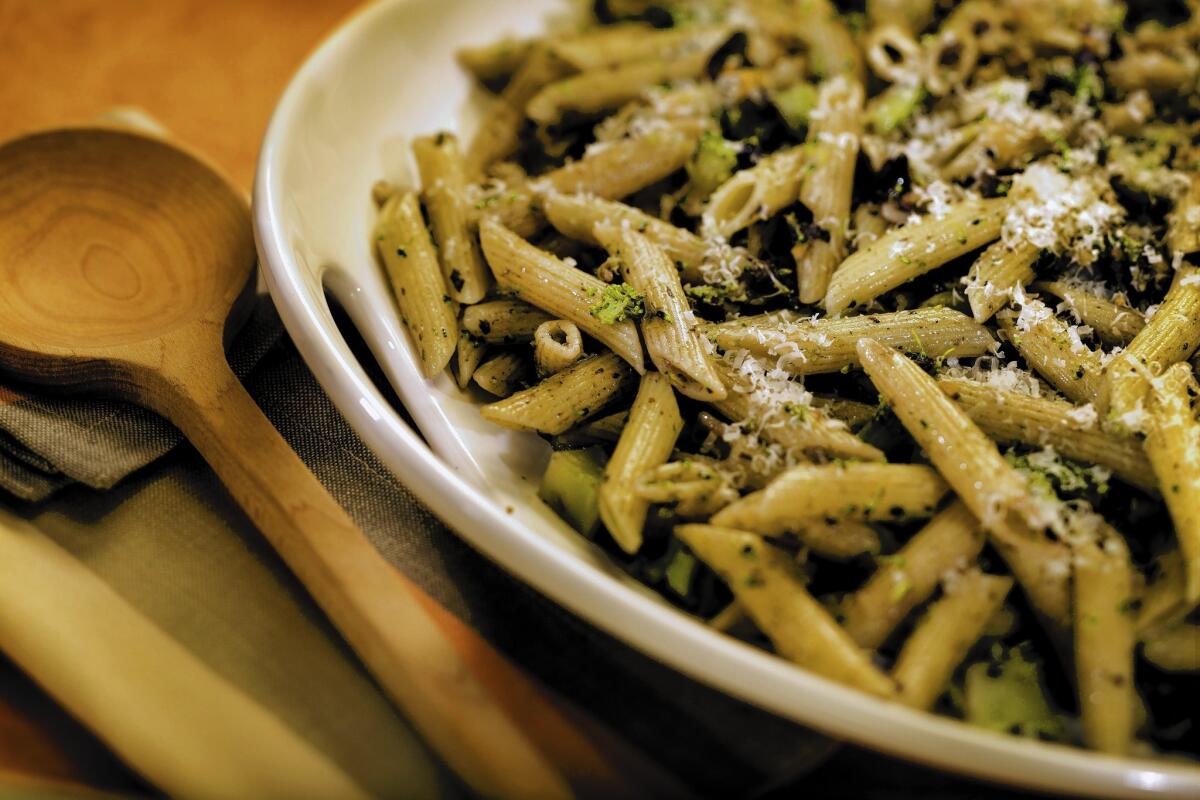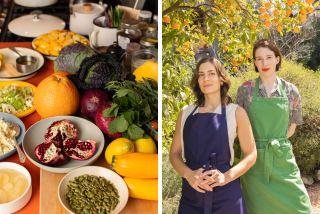California Cook: Broccoli, cauliflower deserve the soft touch

Anyone who can turn on an oven knows the difference between broccoli and cauliflower, right? One is green and shaped like a tree and the other is white and looks more like a brain. Well, it turns out it’s a little trickier than that. In fact, these two heady members of the brassica family are a lot more closely related than might be apparent.
Actually, there are many members of the family that fall in between. There are even white broccolis, oddly enough. Perhaps the most recognizable example is the gorgeous romanesco broccoli, which looks like an experiment in fractal geometry that can fit on your dinner plate. Or, should I say, romanesco cauliflower because, despite the name it’s commonly given, it’s actually closer to that than broccoli, even if it is a pale shade of green.
Besides that tricky bit of food geekery, another thing broccoli and cauliflower share in common is how well they respond to being cooked until they are fairly soft. This will come as a shock to those who still cling to the old “tender-crisp” style of vegetable cookery. But you really should give it a try.
It took a while for me to be convinced as well. But after repeatedly being served versions of broccoli with pasta in which the vegetable, though still vivid green, had been cooked to almost a smearing texture, I had to admit that the flavor was better than the way I had been preparing it, where the florets were barely fork-tender.
Just to be clear: I’m not talking about cooking these the way your grandma might have done. You don’t need to boil them into stinking sulfurous submission to get this effect. Try adding just another minute or two to the cooking time and I think you’ll be surprised by the difference.
In the Sicilian broccoli pasta recipe from Oretta Zanini de Vita’s and Maureen B. Fant’s quite wonderful new book “Pasta the Italian Way: Sauces & Shapes,” the broccoli is cooked to the point that you can break it up with a spatula — first blanched and then sauteed in olive oil with pistachios, anchovies and chopped olives. Cut the cooking short and the broccoli is wild and a bit bitter. Give it the full run and you’ll be surprised at how complex and mellow it turns.
I’ve had the same experience with cauliflower. Cook it until it’s barely tender and it’s an “American Idol” type of vegetable, kind of sweet, a little bland and ultimately forgettable. Push it a little bit; cook it until it’s just soft enough to smash between your fingers, and it’s a completely different thing, deep and complex with a flavor that’s slightly mustard-y and even has a whiff of truffle to it (or is that my imagination?).
This is the way you cook those suddenly trendy cauliflower steaks (where did they come from, anyway?). Saute them long enough to get the caramelization started and then finish them in the oven until they are golden brown and can be pierced easily with a fork. Be careful, they’re fragile. You can get much the same flavor without nearly the effort (but not nearly as pretty either) by separating the cauliflower into florets, tossing them with olive oil and simply roasting them until they’re tender.
I find a smear of romesco sauce works very well either way. The recipe I have used for years is loosely adapted from Patience Gray’s “Honey From a Weed,” though I like both hazelnuts and almonds and she prefers almonds only.
But feel free to use your own recipe. There are almost as many variations for romesco as there are broccoli and cauliflower.
More to Read
Eat your way across L.A.
Get our weekly Tasting Notes newsletter for reviews, news and more.
You may occasionally receive promotional content from the Los Angeles Times.










